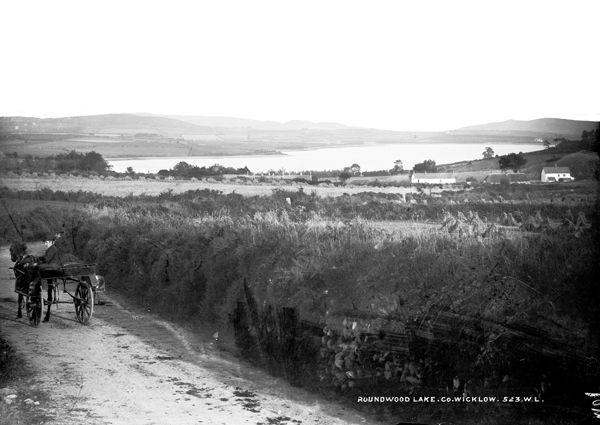Roundwood reservoir opens to secure Dublin water supply
Wicklow, 20 June 1923 - Almost twenty years after work on it commenced, a new reservoir at Roundwood, Co. Wicklow has today been officially opened. The new reservoir, built at a cost of £250,000, will serve as an auxiliary to the Vartry reservoir and will be a vital supply of water to the city of Dublin.
The main duties at the opening ceremony were performed by Alderman Michael Staines, chairman of the Municipal Waterworks Committee of Dublin Corporation. Work on plans for the new reservoir began in 1903 and the completed reservoir owes its design to Mr. R O’Sullivan who was supervised by resident engineer, Mr. F.M. Webb.
By 1912 most of the excavations, undertaken by Messrs Mackie and McNally, had been completed with a long puddle trench dug and connections made between the old reservoir and the site of the new one. Work was then taken up by A Scottish firm of contractors on behalf of a U.S. based company, only for the Great war to stall progress for several years. It was not until 1920 when the project was begun again under the direction of Dublin-based Messrs H and J Martin.
The new reservoir will provide the citizens of Dublin with a reserve water supply of 1,233 million gallons. However, the benefit will only begin to be felt once the valley fills with water.
British Pathé footage of Alderman Staines and members of Dublin Corporation attend opening of the Roundwood reservoir in June 1923
Measuring two miles in length and a maximum width of two-thirds of a mile, the reservoir reaches a depth of 52 feet and is only separated from the existing reservoir by a distance of 200 to 300 yards. An embankment measuring 2,220 feet and reaching a peak height of 56 feet - 6 feet above the top water level - separates one from the other.
Where previously there was a large amount of water going to waste owing to lack of capacity, particularly in winter, now all will be conserved with two scientific systems set up to ensure supply to the existing reservoir can be maintained.
Perhaps the most striking feature of the new reservoir is the impressive cut-granite tower, which contains valves and houses three intakes at different levels. Another is an enormous funnel, constructed of masonry, which forms the overflow shaft from the new reservoir to the old. The funnel is 74 feet in diameter at the top and 12 at the bottom.
[Editor's note: This is an article from Century Ireland, a fortnightly online newspaper, written from the perspective of a journalist 100 years ago, based on news reports of the time.]





















